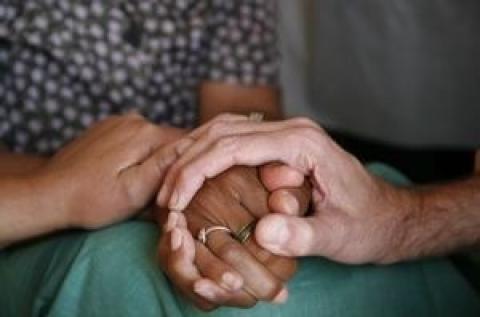
“You are the Christ, the Son of the Living God” is an extraordinary personal confession by Peter. In today’s gospel, Jesus demands a personal recognition of who He is. “Who do you say that I am?” Jesus asked. It is not enough to know “about Jesus.” One must “know Jesus” in a personal and intimate way. From Peter’s direct response to Christ, Peter truly knew Jesus. Peter not only confessed that Jesus was the Christ, but soon after Peter’s actions and leadership (Acts 3: 1-10) demonstrated his deep understanding of what Christ would expect from him. Peter witnessed to Christ’s legacy by saying to the lame man at the temple, “I have not silver and gold, but I give you what I have; in the name of Jesus Christ of Nazareth walk.” The biblical story says the poor man entered the temple “walking and leaping and praising God.”
Jesus’ entire life proclaimed that the Reign of God has come. People who are poor have the good news preached to them not only in word, but also, and more importantly, by compassionate action and loving service. Pope Francis, successor of St. Peter, is creating renewed enthusiasm with his challenging calls that the church be a poor church serving those who are poor; that the church is a field hospital serving the wounded; and that our Church must be a Good Samaritan Church. These recent Papal exhortations are giving a fresh, colorful coat of paint to the old institutional church.
Allow me to share a personal story how I have experienced the Reign of God’s presence, when our pastoral team was a small Good Samaritan community. I was sent with a pastoral team of men and women, lay and religious, to a slum Nueva Tacagua, Caracas, Venezuela, which was a government resettlement housing project for families who lost their homes in mudslides. One day I met an elderly widow named America. She lived with her daughter and three grandchildren in a one room hovel. The stove sat on a table in one corner. The sheet rock walls were blackened from the old kerosene stove. The floor was made of crude concrete and the ceiling was made of corrugated zinc. There was little food in the one room home. Neighbors called America “La Loca,” the crazy one. She surely was a neglected person. Mother Teresa said poverty and hardship are not the worst aspects of life, but being unwanted, unloved and uncared for were.
After consulting with America and her daughter, lay missioner Jim Sweeney and I drove “La Loca” to a home for people who are poor and destitute run by a community of religious sisters. Several weeks later, Jim and I returned to visit her. She met us with a warm smile displaying her missing teeth. Her hollow cheeks were filling out, her hair was washed and combed, and her dress was clean. She greeted us with the hopeful expression: “Tomorrow, I am going to the dentist!” She asked about her grandchildren. America added some grandmotherly advice. She was different, transformed. America now seemed like a new lady full of wisdom and beauty. The words of Mother Teresa came to mind. When asked, how does one serve so many poor people, she answered, “One at a time.” America’s personal transformation was a visible sign that Reign of God is here.
On this day in 1911, Maryknoll founders Bishop James Walsh and Father Thomas Price demonstrated that they personally “knew Jesus” and his request to seek first the Reign of God. On that day, these two men met Pope Pius X and received permission to start the Maryknoll movement. Like Peter in today’s gospel, Walsh and Price were making a deep personal commitment to Christ. Since that time, the missioners of Maryknoll who were followers of these founders have touched the lives of those who are poor, sick and widowed. The earliest Maryknollers, including Thomas Price, who sailed to China, built orphanages and homes for people with leprosy, which is now known as Hansen’s Disease (HD). In 2014, those same clinics are still functioning. Like Saint Peter who made the lame man walk, today Maryknoll Brother Bob Butsch makes special orthopedic shoes for Chinese HD sufferers who have lost their toes in order that they can walk. I have seen these elderly folks entering the clinic’s chapel not leaping but they are “walking and praising God.” Brother Bob’s compassionate work reflects that the Reign of God is here. The Church is a field hospital.
Jesus began a movement of men and women who would carry out his universal mission by serving others (Matthew 25). In that same spirit, James Walsh and Thomas Price carried on that same legacy. They believed that the Maryknoll movement would consist of faithful and compassionate service to build God’s Reign. By Maryknoll’s compassionate services, they would reflect the faith and spirit of Saint Peter. To Jesus’ question, “Who do you say that I am?” what is your personal response? How do you respond? Does your response reflect the values of a Good Samaritan Church?
